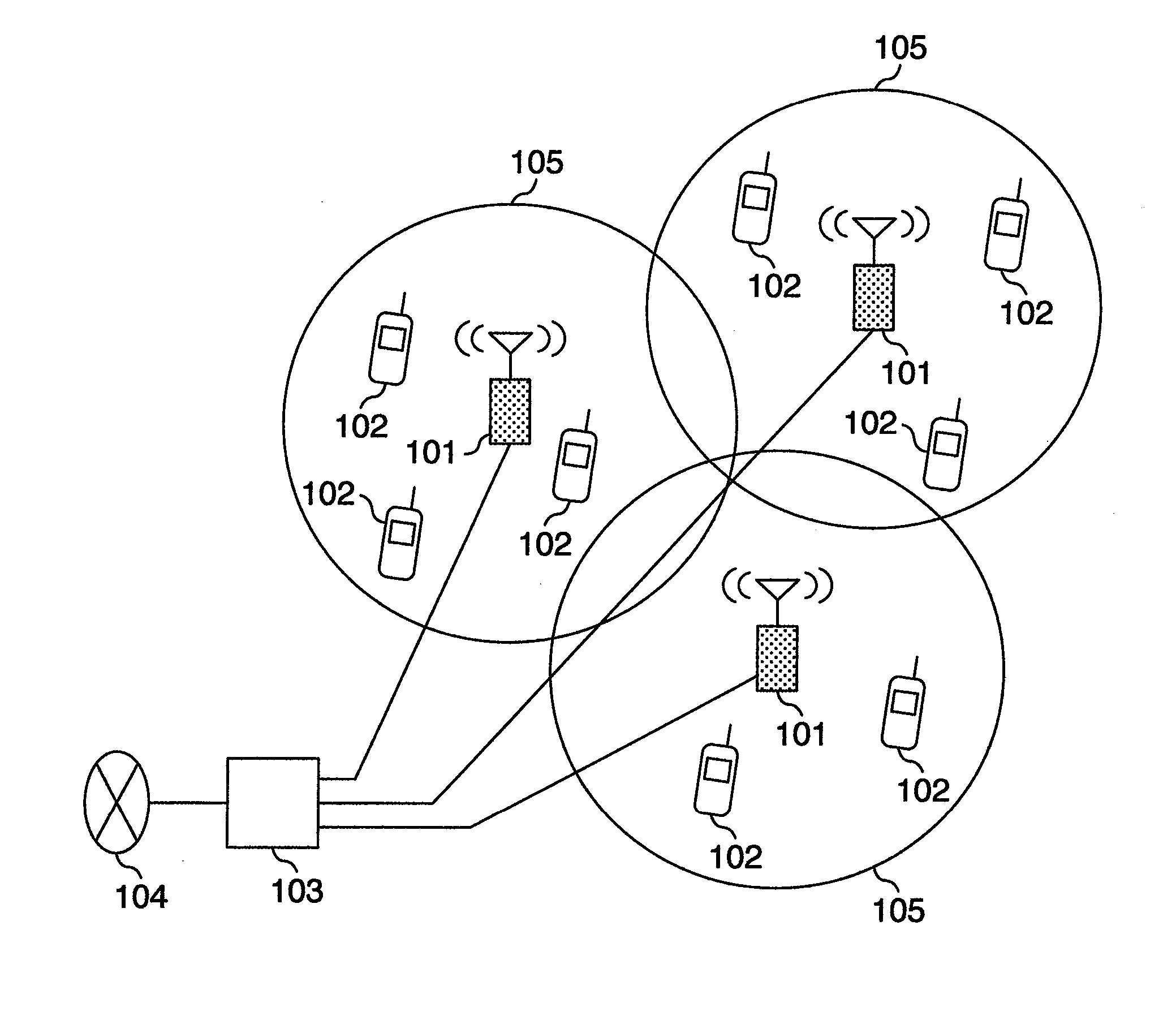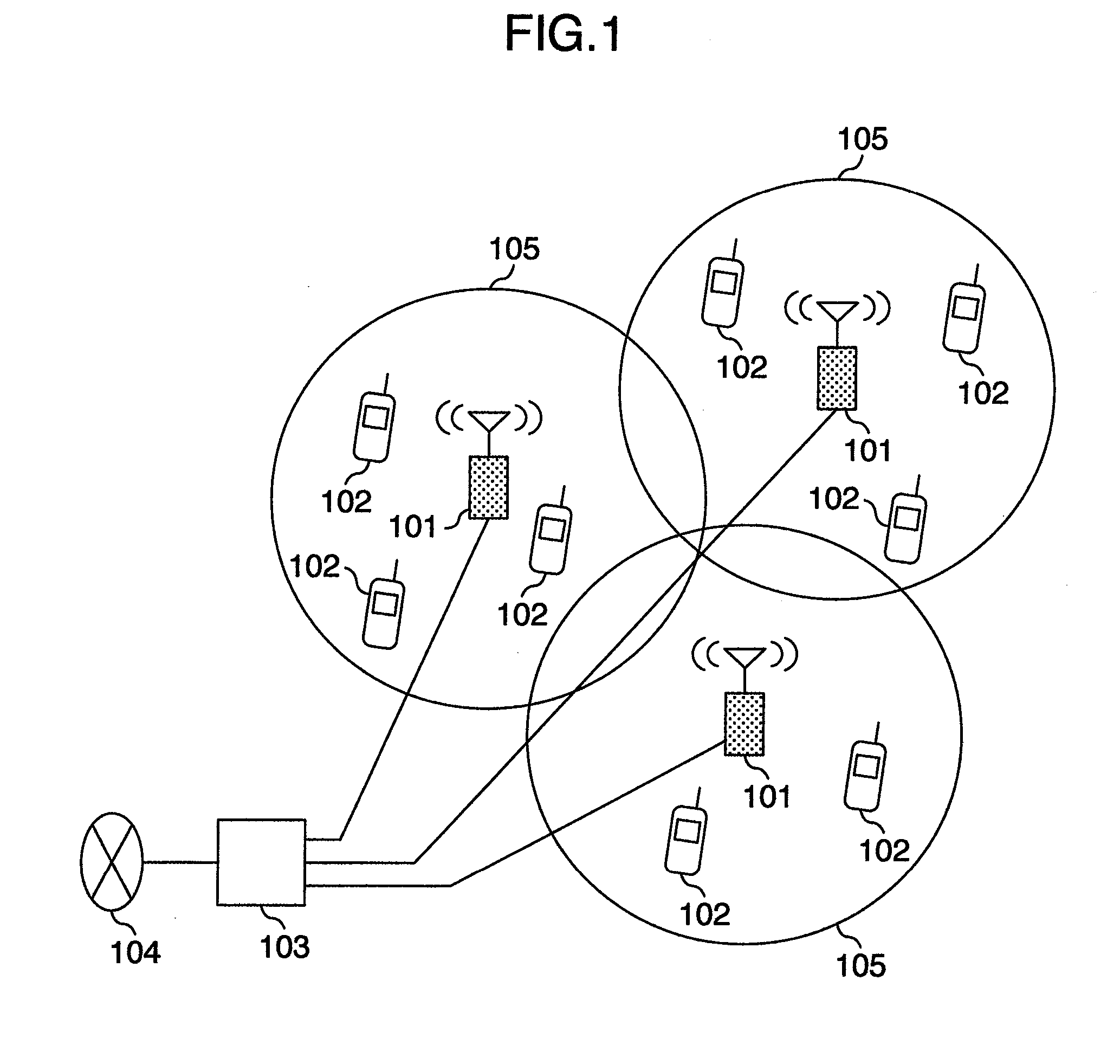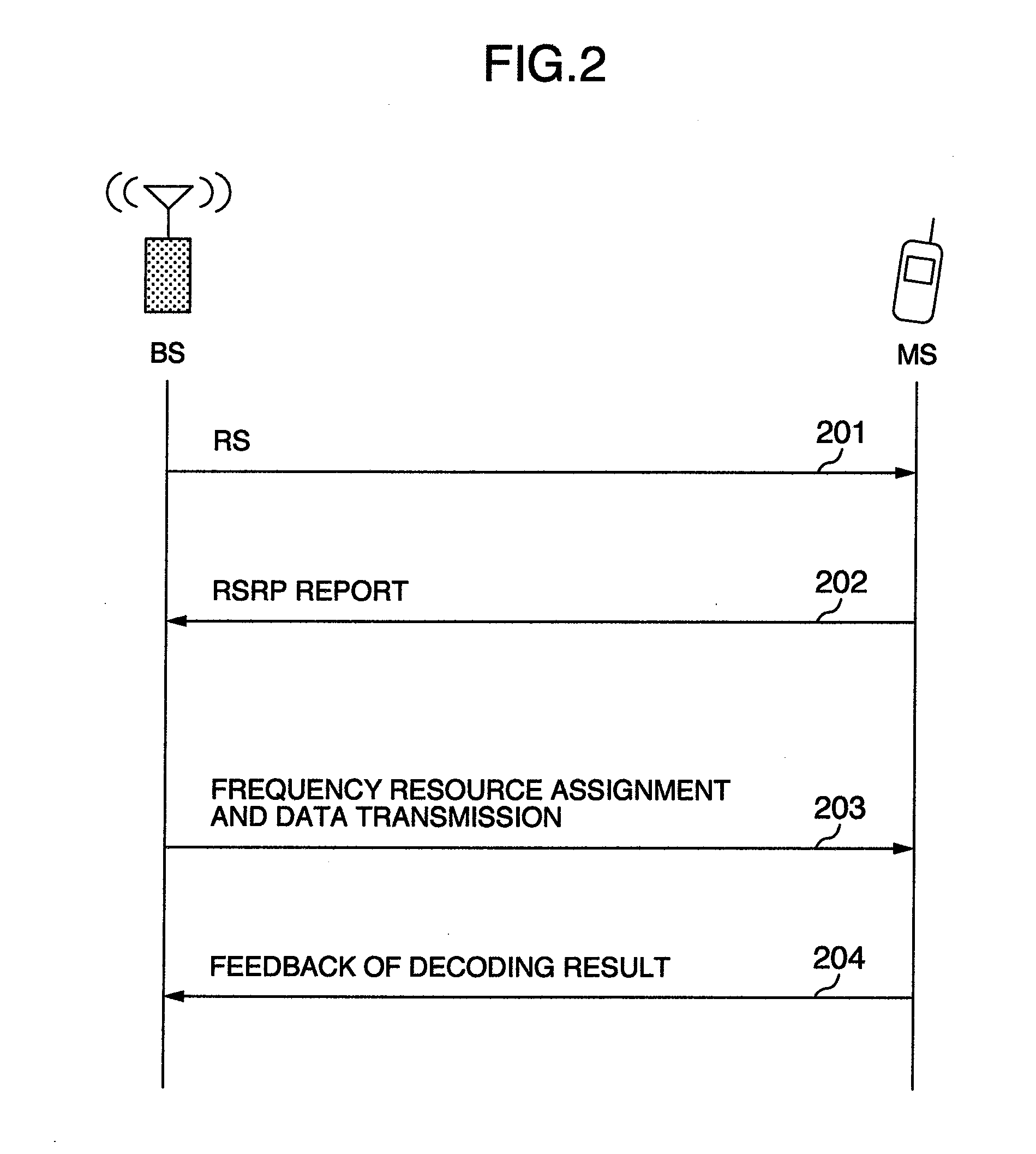Wireless communication system, base station and mobile station
a wireless communication and base station technology, applied in the direction of wireless commuication services, electrical equipment, transmission path sub-channel allocation, etc., can solve the problems of reducing the throughput of neighboring cells, reducing the throughput of cell-edge mss, and sometimes not being able to accommodate cell-edge mss in the cell-edge band, so as to prevent an increase in interference power and increase the utilization efficiency of wireless resources
- Summary
- Abstract
- Description
- Claims
- Application Information
AI Technical Summary
Benefits of technology
Problems solved by technology
Method used
Image
Examples
first example
[0085]A first example of the present invention will be described below with reference to FIG. 13. In the first example, an unnecessary increase in the amount of cell-edge band is prohibited on the downlink based on the information obtained from the neighboring cells.
[0086]FIG. 13 is a flowchart showing an example of the procedure for use by a BS, which performs bandwidth partitioning, to determine if a change from a cell-center band to a cell-edge band is to be prohibited based on the information obtained from the neighboring cells. In the example shown in FIG. 13, the information obtained from the neighboring cells is RNTP. Referring to FIG. 13, the BS first calculates the statistical amount of RNTP information obtained from the neighboring cells (1301). The statistical amount of RNTP information is, for example, the total of RNTP from the neighboring cells calculated by adding up in the frequency direction or the amount of RNTP accumulated for a predetermined period. If the RNTP s...
second example
[0088]A second example of the present invention will be described below with reference to FIG. 14. In the second example, an unnecessary increase in the amount of cell-edge band is prohibited on the uplink based on the information obtained from the neighboring cells.
[0089]FIG. 14 is a flowchart showing an example of the procedure for use by a BS, which performs bandwidth partitioning, to determine if a change from a cell-center band to a cell-edge band is to be prohibited based on the information obtained from the neighboring cells. In the example shown in FIG. 14, the information obtained from the neighboring cells is HII. Referring to FIG. 14, the BS first calculates the statistical amount of HII information obtained from the neighboring cells (1401). The statistical amount of HII information is, for example, the total of HII from the neighboring cells calculated by adding up in the frequency direction or the amount of HII accumulated for a predetermined period. If the HII statist...
third example
[0091]A third example of the present invention will be described below with reference to FIG. 15. In the third example, an unnecessary increase in the amount of cell-edge band is prohibited according to whether or not the cell-edge band can accommodate the MSs. The third example may be applied to both the downlink and the uplink.
[0092]FIG. 15 is a flowchart showing an example of the procedure for use by a BS to determine if a change from a cell-center band to a cell-edge band is to be prohibited according to whether the cell-edge band can accommodate the MSs. In FIG. 15, after the frequency resource assignment, the BS first checks if the cell-edge band can accommodate all MSs (1501). Whether or not the cell-edge band can accommodate all MSs may be determined, for example, based on the result in a predetermined period in the past. If the cell-edge band can accommodate all MSs (Yes in 1501), the BS determines that there is no need to increase the amount of cell-edge band and prohibits...
PUM
 Login to View More
Login to View More Abstract
Description
Claims
Application Information
 Login to View More
Login to View More - R&D
- Intellectual Property
- Life Sciences
- Materials
- Tech Scout
- Unparalleled Data Quality
- Higher Quality Content
- 60% Fewer Hallucinations
Browse by: Latest US Patents, China's latest patents, Technical Efficacy Thesaurus, Application Domain, Technology Topic, Popular Technical Reports.
© 2025 PatSnap. All rights reserved.Legal|Privacy policy|Modern Slavery Act Transparency Statement|Sitemap|About US| Contact US: help@patsnap.com



